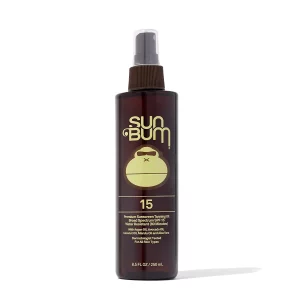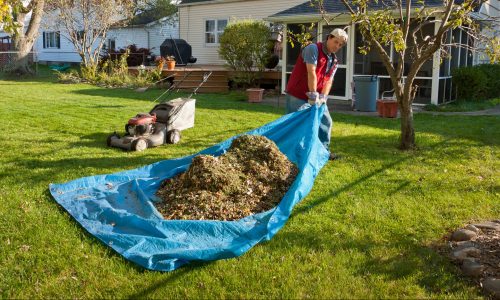The Best Sunscreens & Tanning Products

Our Review Process
Don't Waste Your Money is focused on helping you make the best purchasing decision. Our team of experts spends hundreds of hours analyzing, testing, and researching products so you don't have to. Learn more.
Our Picks For The Top Sunscreens & Tanning Products
- 1. Australian Gold Cruelty-Free Bronzer Sunscreen & Tanning Spray
- 2. Cetaphil Hydrating Microbiome Mineral Sunscreen
- 3. Sun Bum Water Resistant All-Skin Tanning Oil
- 4. Coppertone Full Coverage Sunscreen & Tanning Spray Oil
- 5. Perfect Image Zinc Oxide Hypoallergenic Sunscreen Moisturizer
- 6. Banana Boat Unscented Children’s Sunscreen, 2-Pack
- 7. Hawaiian Tropic Skin Conditioning Tanning Oil, 2-Pack
- 8. GOLDEN STAR BEAUTY Certified Organic Self Tanner Lotion
- 9. Coppertone Lightweight Sunscreen & Tanning Lotion
With this sunscreen and tanning product, you'll enjoy SPF 15 protection. The spray bottle makes the sunscreen easy to apply, and users will appreciate that the formula dries quickly without leaving your skin greasy. In addition to a warm glow, your skin will also appreciate the included vitamin C and tea tree oil.
Affordable OptionYou won't have any trouble sticking to your budget when you opt for this economical sunscreen and tanning product.
Chemical-free sun protection is what you'll get from this travel-sized gentle mineral sunscreen, which still offers powerful, water-resistant protection. The formula isn't greasy or chalky and includes vitamin E and prebiotics so it's perfect for daily use.
No IrritationPrebiotics and vitamin E have been added to this sunscreen and tanning product to keep skin healthy and nourished.
This 8-.5-ounce spray bottle features a tanning oil that nourishes and protects your skin while also helping you get tan. It has SPF 15 UVA/UVB protection to help block out the more harmful rays while you’re tanning. Natural oils and aloe vera will help keep your skin healthy and hydrated.
Versatile OptionNo matter your skin type or how you’re spending your day, this sunscreen and tanning product has you covered with a formula you can fit to your needs.
This 5.5-ounce sunscreen and tanning product has a light, non-greasy feel. It can be applied with a continuous spray at any angle. The formula has that famous Coppertone fragrance, comes enriched with oxidants and is rated as SPF 15.
Handy DesignThis spray tanning oil is waterproof for up to 80 minutes and is designed to protect while you tan.
Buying Guide
The Skin Cancer Foundation says that sunscreen is an important part of your sun protection strategy. When it’s used as directed, it not only decreases your risk for skin cancer and pre-cancers but also helps prevent the premature aging of your skin. So, when shopping for sunscreens and tanning products, there are a few things you’ll want to keep in mind.
First, decide if you want a mineral or chemical sunscreen. Mineral-based sunscreens contain ingredients like zinc oxide and titanium oxide, which sit atop your skin and physically block the dangerous ultraviolet rays of the sun. They are well-tolerated by those who have skin allergies. Chemical sunblocks contain ingredients, such as oxybenzone or octinoxate, designed to filter out and absorb radiation. They are more lightweight and less chalky, and work well for daily protection.
You’ll want to make sure you’re getting a broad-spectrum sunscreen. This mean’s it’ll protect you both from UV-A rays, which age skin, and UV-B rays, which play a bigger role in causing skin cancer.
Then, decide which method of application you prefer. There are three major choices, and each has its pros and cons.
Sunscreen Sticks:
- Pros: They’re easy to store in a beach bag, have a lightweight application, are ideal for facial use, and won’t leak.
- Cons: Even application is difficult to achieve. The sticky formula goes on clear, so you can’t always tell if there are spots you’ve missed.
Cream Sunscreens:
- Pros: It’s easy to spot any areas you’ve missed and there’s no risk of inhaling any chemicals.
- Cons: Bottles can explode in a hot gym bag. Creams take longer to apply than a spray sunscreen. These may leave hands feeling greasy and are difficult to apply to your own back.
Sunscreen Sprays:
- Pros: These are super quick to apply and your hands remain grease-free. You can reach your back without assistance and the spray application may help protect your scalp.
- Cons: You can inhale the chemical spray and it’s easy to accidentally get the sunscreen in your eyes. The formula must still be rubbed in by hands for optimum coverage.
Once you’ve determined your preferred type of sunscreen, take a look at the SPF rating. You’ll find there’s a wide range, with some sunscreens rated as low as SPF 8 and others as high as SPF 50. The higher the number, the better your sun protection. The American Academy of Dermatology recommends sticking with SPF 30 or higher. Just remember that higher SPFs still need to be reapplied often.
Next, review the sunscreen’s active and inactive ingredient list. You may wish to make sure the formula doesn’t contain any dyes, para-aminobenzoic acids (PABAs) or oxybenzone. Determine whether the fragrance is natural or chemical, as chemical fragrances may cause rashes or allergic reactions on individuals with sensitive skin. It’s also a good idea to check for ingredients that are good for your skin. For example, some bottles contain vitamin E for its antioxidant power and prebiotics to lock in moisture and keep skin hydrated.
Individuals who plan on participating in outdoor sports or water activities will want to make sure the sunscreen they select is water-resistant. Most are waterproof for up to 80 minutes, but you’ll need to check the label to be sure. You’ll also need to reapply the sunscreen once the 80 minutes are up, or anytime you towel dry.
Should you be in the market for a tanning product, it’s important to note that many do not include any protection against sunburn. They are simply designed to darken your skin color.
Just like with sunscreens, you’ll want to check the tanner’s ingredients list. You’ll find there are tanners on the market made using certified organic oils, such as coconut oil, argan oil and avocado oil. Others may feature aloe vera to keep skin moisturized and vitamins A, C and E for their antioxidants.
Look for tanners that are listed as streak-free and fast-absorbing. You don’t want a bottle that leaves you looking orange or one that easily transfers to your clothes or bedding, causing stains that are hard to get out.
Consider how dark you want your skin to be. Some tanners are only designed for light and medium tans. Others can be reapplied once per day for up to three days to increase the darkness of your skin.
What to Look For
- Most sunscreens are flammable, and therefore have warning labels to indicate that you should not use them near heat, flames or when smoking. Make sure they are stored in a location that is cooler than 120 degrees Fahrenheit.
- Look for sunscreens that protect against both UVA and UVB rays. These will be labeled as broad-spectrum sunscreens.
- You may also want to look for water-resistant as well as coral reef-safe formulas if you’ll be in the water, especially in oceans.
- Take a look at bottle size before you buy. A 1.7-ounce sunscreen may be ideal for an afternoon at the park, but a bottle holding at least 8 ounces is needed for a family on a weekend beach vacation. If you’re flying with sunscreen, you’ll need to adhere to Transportation Security Administration (TSA) rules about traveling with liquids inside containers that have under 3.4 ounces.
- When using a tanning product, make sure you exfoliate your skin before applying the cream for the best results.
- You should not apply sunscreen to skin that has cuts or wounds. If a skin rash occurs after use, contact your doctor, as you may be allergic to one of the sunscreen’s ingredients.
- Always store sunscreen where children can’t access it, such as on a high shelf or in a locked medicine closet. If a child does get into the sunscreen and swallows it, call the Poison Control Hotline right away at 1-800-222-1222.
- Never use sunscreen on children under the age of 6 months without consulting with your baby’s pediatrician.
- If you accidentally spray the sunscreen into your eyes, flush your eyes with water. You may wish to have an emergency eye wash on hand for this purpose.
- Sunscreen should always be applied at least 15 minutes before you plan on heading outside.
- Individuals who are heat-sensitive may wish to avoid spending time in the sun between the hours of 10 a.m. and 2 p.m., as this is when temperatures are at their highest.
- It’s always good practice to pay attention to the weather forecast and review the day’s UV index before planning outdoor activities.
- Some sunscreens and tanning products can stain clothing.
- Long-sleeved shirts, pants, hats and sunglasses can add a layer of protection against the sun’s harsh rays.
More to Explore
Humans have been taking steps to protect their skin from sun damage since the beginning of time. For example, back in 3100 B.C., the Egyptians would use rice, jasmine and lupine extracts for that purpose.
Today’s commercial sunscreens weren’t created until after Johann Ritter, a German scientist, discovered ultraviolet rays in 1801. Much later, an Australian chemist named Milton Blake was then able to take this information and create the first commercial sunscreen for the Hamilton brand. That was back in 1932, and you can still buy it.
In 1938, Swiss chemist Franz Greiter created Glacier Cream to protect mountain climbers from getting burned. He also created the Sun Protection Factor rating. Just six years later, Floridian Benjamin Green came up with a sunscreen formula for military members during World War II. Today, Green’s sunscreen is sold under the popular name Coppertone.
Over the years, sunscreen and tanning products have greatly evolved. There are a wide range of SPFs on the market, as well as formulas that are waterproof, non-greasy and non-comedogenic (formulated to not clog pores). Ingredients have been added to protect individuals from UVA and UVB rays. You can even purchase all-natural sunscreens and aerosol-spray versions.



















